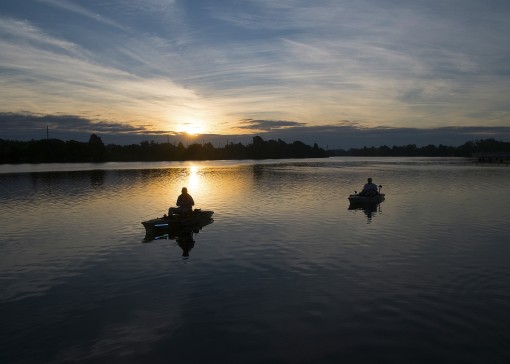Creek Lake River Gulf
August 12, 2014 | By Shoal Creek Conservancy
This blog post was written by Ted Lee Eubanks. To learn more about the author, please visit this site.
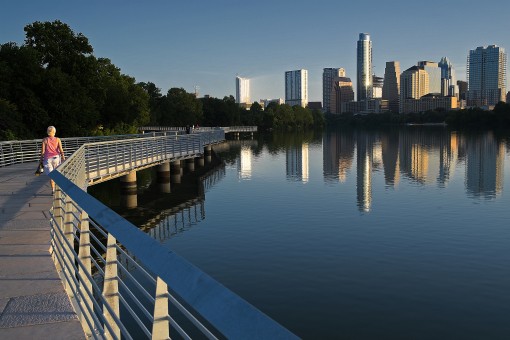
Toe bone connected to the foot bone
Foot bone connected to the heel bone
Heel bone connected to the ankle bone
Ankle bone connected to the shin bone…
Shoal Creek is connected to the Colorado River; the Colorado River is connected to the Gulf of Mexico. The Butler Hike-and-Bike Trail around Lady Bird Lake is finally connected via a new boardwalk. The people of Austin can now connect to the natural heritage of our region through the public lands that line the lake.
I spent late spring and summer recuperating from knee surgery, and as soon as I could hobble around I began walking the new boardwalk and exploring our lake in its entirety. Few U.S. cities can boast of a river running directly through the middle of the urban core, and even fewer can brag about a hike-and-bike trail running along its bank. I decided that after 20 years of living in Austin, I needed to better acquaint myself with Lady Bird Lake.
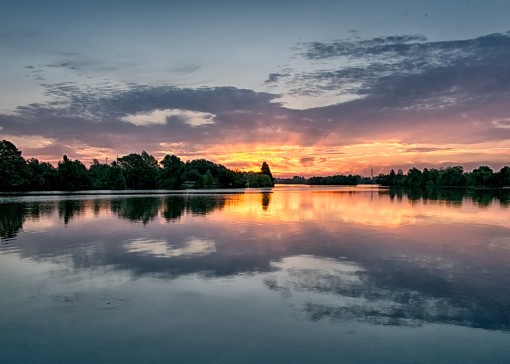
Lady Bird Lake began as Town Lake in the early 1960s with the completion of Longhorn Dam. According to a plaque mounted on the dam, the dam derives its name because it was the ford across the Colorado for longhorn cattle drives as a part of the Chisholm Trail in the late 19th century. The construction of the new boardwalk gives hikers and bikers access to the entire lake from Longhorn Dam up to MoPac. The entire circuit is around 10 miles.
If you have yet to enjoy the boardwalk, get out there and go for a walk. The boardwalk extends along (and over) the lake from Lakeshore to Congress. The Trail Foundation pushed this project for years and raised the $3 million match as required by Austin’s city council. This boardwalk is a public works project that the citizens of Austin can be proud that they largely funded.
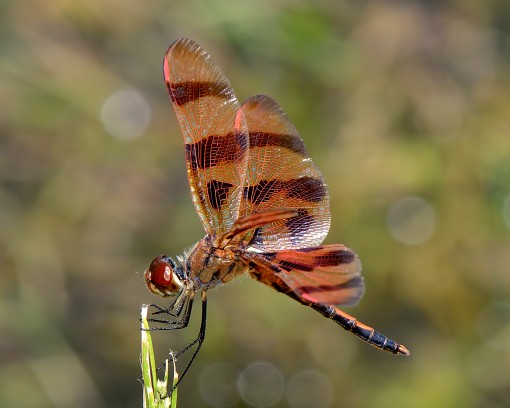
The boardwalk invites you to get to know our lake in its every detail, and I accept the invitation. As my knee improved, I extended my walks. Now I cover over 7 miles each day, and these daily hikes have given me the chance to get to know my neighbors, human and otherwise.
Although I have the trail largely to myself in the early morning, by 7 am or so the people begin to arrive. Most of the people on the trail are rushing to squeeze in a few miles before hustling off to work. They jog or power walk at a fast clip and pay little attention to what’s around them. For most people, the trail is no more a part of nature than a treadmill at the gym.
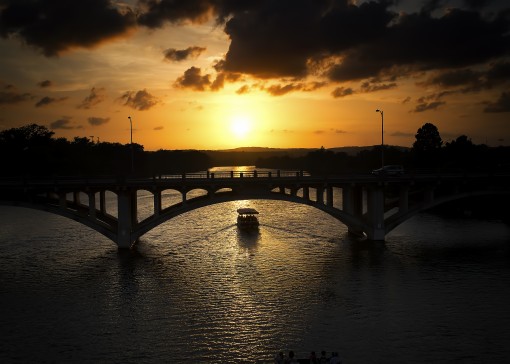
Not everyone is so rushed. The number of anglers that I see in the lake every morning has surprised me. The fish apparently have moved to the shade under the elevated boardwalk, and the anglers have migrated to the boardwalk along with the fish. Evidence of other anglers, such as the yellow-crowned night-heron, is found on the surface of the boardwalk itself. The night-herons leave their scraps on the concrete from the crawfish they dismantle during the night.
The shoreline has been teaming with a variety of dragonflies and damselflies this summer. These insects are spectacularly colorful additions to any lakeshore walk, and as the summer has deepened these cold-blooded bugs have become increasingly active. The nymphs of these insects are voracious predators, often gorging on mosquito larvae. Of the insects that I see on my walk, I like damselflies (feeding on mosquitos) and the differential grasshopper (feeding on giant ragweed) the best.
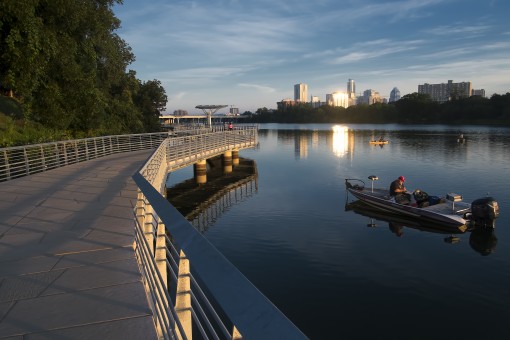
I have noticed a great deal of bat activity under the Congress Street bridge these past couple of weeks. The Mexican free-tailed bats that spend the summer under the bridge have been active well into the daylight hours. In fact, a great time to see the bats is around 7 AM from the trail at the base of Congress by the Austin American-Statesman.
Shoal Creek is a tributary of the Colorado River and Lady Bird Lake. During my morning walks, I often spend time exploring the various connections between the two. Nature ties the watershed together, yet most of us are completely oblivious to which one swirls around us. Over the next couple of years, I am hopeful that the Shoal Creek Conservancy will be able to introduce the people of Austin to the heritage that this lake and our creek represent. This is a natural patrimony shared by all, one that must be protected if future generations are going to enjoy its benefits. As Austin grows, and new residents stream into our city, this patrimony is placed at risk. It is our responsibility to acquaint our neighbors with Austin’s natural heritage and to help them appreciate what this remarkable watershed and lake have to offer.
